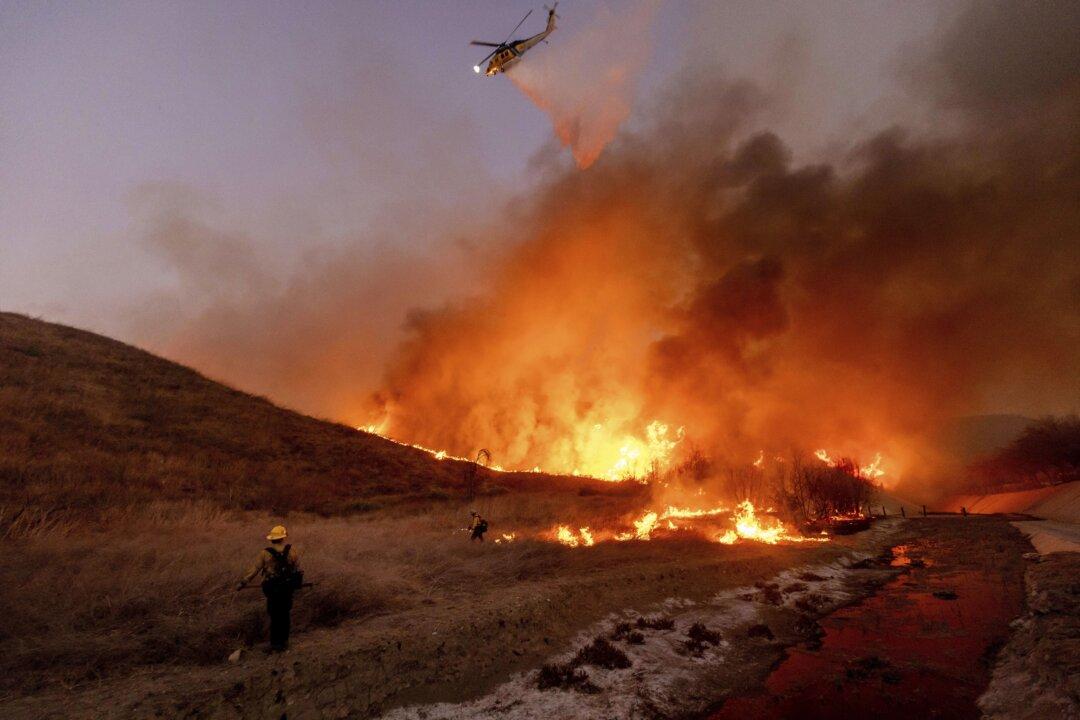Winding roads from the north and south lead to Mount Soledad, one of the must-see destinations for any visit to San Diego. Come to this mountaintop shrine to appreciate stunning views and remember those who gave the ultimate sacrifice. Don’t forget to bring a jacket, however, as the breeze here can often make for a chilly experience.
Since 1913, a cross has stood atop Mount Soledad, a site of sunrise and Easter services since the 1950s in San Diego. The cross has been rebuilt twice, and the third, present day version was unveiled in 1954, when the site became the Mount Soledad National Veterans Memorial. Alongside the big cross and the many memorials beside it, the American flag waves proudly in the cool breeze.
Atop an 822-foot coastal peak, and beneath the 29-foot tall cross, circular walls display nearly 6,000 black granite plaques honoring those living and deceased who have served in all branches of the military from the Revolutionary War to the war on terror—including actors, politicians and other famous people who served. Each plaque features the name, photo, and brief military history of a veteran.
The memorial stands mostly in La Jolla, where the northern and eastern slopes form a long steep escarpment near the Rose Canyon fault, which runs straight to downtown. Radio and television transmitters are on the summit. Commercial aircraft overhead use this peak as the start of the downwind leg into San Diego International Airport. Between the cross and the television transmitters, a concrete utility building wears the decades upon its exterior.
Upon Mount Soledad, you will be greeted by stunning panoramic views of San Diego County day or night. On a clear day, the entire region can be seen even the outline of homes in Playas de Tijuana. The mountain range is clearly visible straight north, where Los Angeles Harbor juts out into the Pacific.
To the west, the unending sky blues of the ocean bleed into the blue sky. Kelp turns some of the water a deep purple. Out above the sea, the marine layer stalks the coastline. Where it begins, the oceans turn to a cold gray as it reflects the sky.
On the northern slope, a lonely and modest flagpole stands just below the break in the bush, giving way to the best view looking north. No flag flies upon this flagpole. As far as I can remember, this flag pole has always been here. And it’s never had a flag.
While looking north, you see La Jolla. On the slope beside and below the memorial, the colorful mansions of Via Capri sit upon a vibrant, green hill. The last home of Dr. Seuss is located around here. His wife, Audrey, lived at the “Seuss House” until she passed away in 2018. At La Jolla Shores, kayakers paddle out in a group toward the cove. Palm trees reach up from the ground along the La Jolla boardwalk.

Further north, the stubby La Jolla pier protrudes from La Jolla Shores. Torrey Pines Golf Course sits atop the sandstone cliffs. Beyond that, the curvy coastline reveals diverse topography, from abrupt sandstone cliffs to dominant points in the offing, where the Southern California Bight takes a chunk out of the Pacific.
As I scan from west to east, I see the bright white Mormon temple, then downtown La Jolla and its modest high-rises. The train and trolley tracks run north to south along Interstate 5. I swivel my head and set my sights on Miramar to the east. I see the runway where jets take off and land day in and day out. Where I can see bare earth, it’s a desert straight out to the towering mountain range in the east.
To the east are the rocky Peninsular Ranges, with the Laguna Mountains to the southeast. The west-facing slopes of the high elevations are home to coniferous and mixed evergreen forests, with oak woodlands and forests of Jeffrey pine and Coulter pine trees.
Pacific Beach is on the gentler southern slope. A pristine road winds up the mountain with nice condos and green terrain along its shoulders. Down below, along the coastline, I can imagine the twentysomethings drinking mimosas and nursing hangovers from the night before, but from up here all is muted. A hawk flies overhead.
The southern part of San Diego Bay reveals a spattering of inlets. I can see the Coronado bridge, a backdrop to San Diego’s downtown business district. About three dozen high-rises tower over the rest of the city. To the west of Playas de Tijuana, the four Coronado Islands are visible.
It wasn’t always a sure thing that San Diego would always have this tranquil monument. Twenty-five years of lawsuits, court rulings, failed sales, and property transfers threatened the existence of the cross atop Mount Soledad, finally coming to an end in 2016. After one of the longest legal battles over religious symbols on private property, the 9th Circuit Court of Appeals issued a ruling ending the case. The legal battle against the city of San Diego and the federal government, beginning in 1989, moved up and down through the federal courts. It went twice to the U.S. Supreme Court.
The matter always revolved around the cross on public property as a violation of the state and federal constitutions, which prohibit the government from endorsing one religion over another. Courts regularly sided with opponents.

The first lawsuit was filed against the city of San Diego, which owned the land, by Vietnam War veteran and atheist Philip K. Paulson in 1989, when the base of the cross already had plaques commemorating veterans.
The cross was ruled for the first time unconstitutional and had to be moved. The city appealed over and over, and by 2006 faced $5,000 daily fines from courts. At the urging of local legislators, the U.S. Congress stepped in and procured the property via eminent domain, transferring it to the Defense Department to use as a war memorial.
The lawsuits started up again, this time directed at the federal government, until the Mount Soledad Memorial Association purchased the land promising to maintain the site as a “veterans memorial in perpetuity.”
Known as “San Diego’s National Treasure,” this pet-friendly, awe-inspiring tribute is open 7 a.m.-10 p.m. daily and offers free admission, portable toilets, and free parking. Be sure to walk around the circular peak and take in the full view. Benches are scattered all around so you can take your favorite view in. The monument is wheelchair and stroller accessible.
Spots remain on the memorial if you have someone in mind and friendly veteran volunteers eagerly await to answer any questions and tell stories about the heroes on the plaques.






